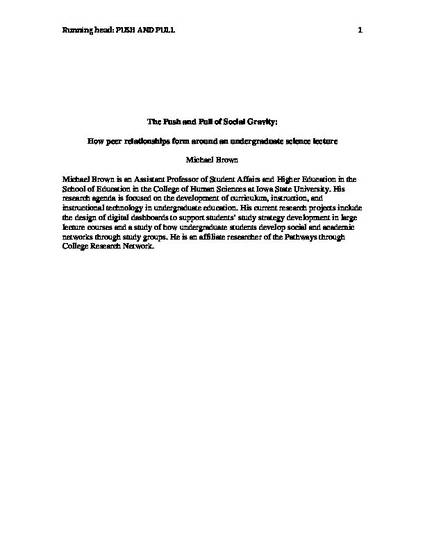
Article
The Push and Pull of Social Gravity: How Peer Relationships Form Around an Undergraduate Science Lecture
Review of Higher Education
Document Type
Article
Disciplines
Publication Version
Accepted Manuscript
Publication Date
1-1-2019
DOI
10.1353/rhe.2019.0112
Abstract
Undergraduate students benefit from academic-centered peer interactions, especially in large lecture courses. However, little is known about how students come together and form relationships around a course. I conduct a mixed-methods study of students' peer networks to explore how students choose peers for academic-focused interactions. The network of connections among students in a large undergraduate physics class decreases over time, leaving students looking for study partners later in the course at a disadvantage. While community structure might limit relationship formation late in the semester, students who connected across campus capitalized on network internalities that facilitated opportunities for collaboration.
Copyright Owner
John Hopkins University Press
Copyright Date
2019
Language
en
File Format
application/pdf
Citation Information
Michael G. Brown. "The Push and Pull of Social Gravity: How Peer Relationships Form Around an Undergraduate Science Lecture" Review of Higher Education Vol. 43 Iss. 2 (2019) p. 603 - 632 Available at: http://works.bepress.com/brown-michael/15/

This article is published as Brown, M. The Push and Pull of Social Gravity: How Peer Relationships Form Around an Undergraduate Science Lecture., Review of Higher Education, Winter 2019, 43(2); 603-632. Doi: 10.1353/rhe.2019.0112. Posted with permission.